Intro
Pityriasis Rosea Herald: Learn about the initial rash, symptoms, and treatment of this skin condition, characterized by a herald patch, secondary eruptions, and pruritus, to manage its effects and prevent complications.
The skin is the largest organ of the human body, and it plays a crucial role in protecting us from external factors. However, it can also be affected by various conditions, including pityriasis rosea. This skin condition is characterized by a rash that can be itchy and uncomfortable. In this article, we will delve into the world of pityriasis rosea, exploring its causes, symptoms, and treatment options.
Pityriasis rosea is a common skin condition that affects millions of people worldwide. It is estimated that approximately 1 in 50 people will develop pityriasis rosea at some point in their lives. The condition is more common in children and young adults, although it can affect people of all ages. Pityriasis rosea is not contagious, and it is not a sign of any underlying serious health condition.
The exact cause of pityriasis rosea is not fully understood, but it is believed to be related to a viral infection. Some research suggests that the human herpesvirus 6 (HHV-6) and human herpesvirus 7 (HHV-7) may be responsible for the development of pityriasis rosea. The condition can also be triggered by other factors, such as stress, hormonal changes, and certain medications.
Pityriasis Rosea Symptoms
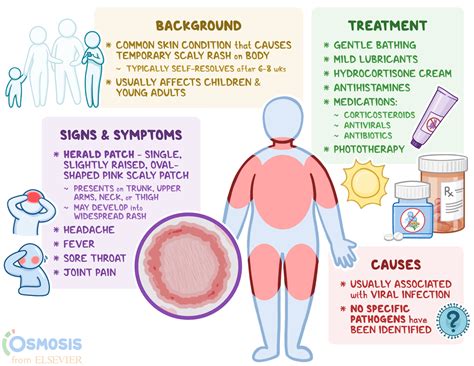
The symptoms of pityriasis rosea can vary from person to person, but they typically include a rash that appears on the skin. The rash is usually pink or red in color and can be itchy and uncomfortable. In some cases, the rash may be accompanied by other symptoms, such as fever, headache, and fatigue. The rash can appear anywhere on the body, but it is most commonly found on the trunk, arms, and legs.
Pityriasis Rosea Stages
The development of pityriasis rosea can be divided into several stages. The first stage is characterized by the appearance of a single patch of skin, known as the herald patch. This patch is usually larger than the subsequent patches and can be itchy and uncomfortable. The herald patch is often followed by a second stage, in which additional patches of skin appear. These patches are usually smaller than the herald patch and can be found on various parts of the body.Pityriasis Rosea Treatment

While there is no cure for pityriasis rosea, there are several treatment options available to help manage the symptoms. These treatment options include:
- Topical creams and ointments to reduce itching and inflammation
- Oral antihistamines to relieve itching and reduce the risk of infection
- Corticosteroids to reduce inflammation and swelling
- Phototherapy to reduce the appearance of the rash
It is essential to note that pityriasis rosea is a self-limiting condition, meaning that it will resolve on its own with time. In most cases, the condition will clear up within 6-8 weeks, although it can take longer in some cases.
Pityriasis Rosea Prevention
While there is no surefire way to prevent pityriasis rosea, there are several steps that can be taken to reduce the risk of developing the condition. These steps include:- Practicing good hygiene to reduce the risk of infection
- Avoiding stress and maintaining a healthy lifestyle
- Getting enough sleep and eating a balanced diet
- Avoiding certain medications that can trigger the condition
Pityriasis Rosea Complications
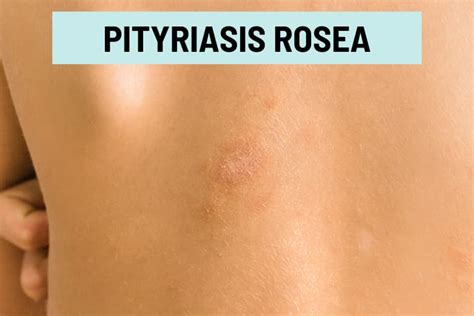
In rare cases, pityriasis rosea can lead to complications, such as:
- Infection: Bacterial or viral infections can occur if the skin is scratched or broken.
- Scarring: The rash can leave behind scars, especially if it is scratched or picked at.
- Post-inflammatory hyperpigmentation: The skin can become discolored after the rash has cleared up.
It is essential to seek medical attention if you experience any of the following symptoms:
- Severe itching or burning
- Increased redness or swelling
- Pus or discharge from the affected area
- Fever or chills
Pityriasis Rosea Diagnosis
The diagnosis of pityriasis rosea is typically made based on the appearance of the rash and the patient's medical history. A physical examination and medical history can help rule out other conditions that may be causing the symptoms. In some cases, a skin biopsy may be performed to confirm the diagnosis.Pityriasis Rosea and Pregnancy
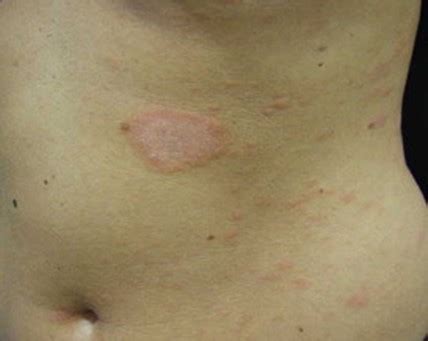
Pityriasis rosea can occur during pregnancy, and it is essential to seek medical attention if you experience any symptoms. While the condition is not typically a cause for concern, it can be uncomfortable and may require treatment to manage the symptoms.
Pityriasis Rosea and Children
Pityriasis rosea can also occur in children, and it is essential to seek medical attention if your child experiences any symptoms. The condition can be uncomfortable and may require treatment to manage the symptoms.Pityriasis Rosea and Home Remedies
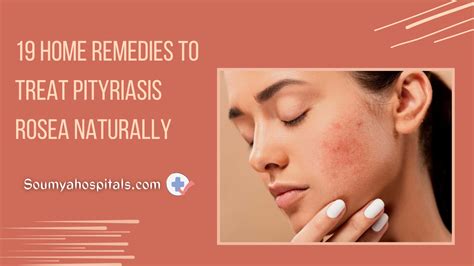
There are several home remedies that can help manage the symptoms of pityriasis rosea, including:
- Applying cool compresses to reduce itching and inflammation
- Taking oatmeal baths to soothe the skin
- Using topical creams and ointments to reduce itching and inflammation
- Practicing good hygiene to reduce the risk of infection
Pityriasis Rosea and Lifestyle Changes
Making lifestyle changes can also help manage the symptoms of pityriasis rosea, including:- Getting enough sleep and eating a balanced diet
- Practicing stress-reducing techniques, such as meditation or yoga
- Avoiding certain medications that can trigger the condition
- Practicing good hygiene to reduce the risk of infection
Pityriasis Rosea and Alternative Therapies
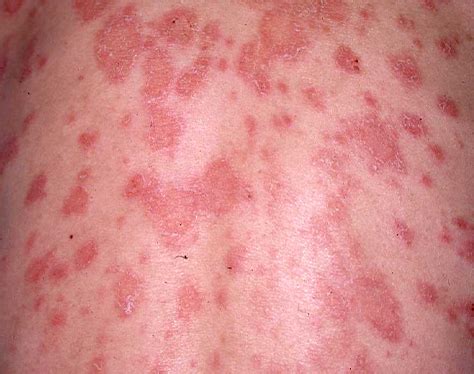
There are several alternative therapies that can help manage the symptoms of pityriasis rosea, including:
- Acupuncture to reduce itching and inflammation
- Herbal remedies, such as aloe vera or tea tree oil, to soothe the skin
- Homeopathic remedies, such as calamine lotion or oatmeal baths, to reduce itching and inflammation
Pityriasis Rosea and Future Research
Further research is needed to fully understand the causes and treatment options for pityriasis rosea. Researchers are currently exploring new treatments, such as antiviral medications, to help manage the symptoms of the condition.What is pityriasis rosea?
+Pityriasis rosea is a common skin condition characterized by a rash that can be itchy and uncomfortable.
What are the symptoms of pityriasis rosea?
+The symptoms of pityriasis rosea include a rash that appears on the skin, itching, and inflammation.
How is pityriasis rosea treated?
+Pityriasis rosea can be treated with topical creams and ointments, oral antihistamines, and corticosteroids.
Can pityriasis rosea be prevented?
+While there is no surefire way to prevent pityriasis rosea, practicing good hygiene and avoiding certain medications can reduce the risk of developing the condition.
What are the complications of pityriasis rosea?
+The complications of pityriasis rosea include infection, scarring, and post-inflammatory hyperpigmentation.
In conclusion, pityriasis rosea is a common skin condition that can be uncomfortable and itchy. While there is no cure for the condition, there are several treatment options available to help manage the symptoms. By understanding the causes, symptoms, and treatment options for pityriasis rosea, you can take steps to manage the condition and reduce the risk of complications. If you have any questions or concerns about pityriasis rosea, be sure to speak with a healthcare professional. We encourage you to share this article with others who may be experiencing similar symptoms, and to comment below with any questions or personal experiences you'd like to share.
